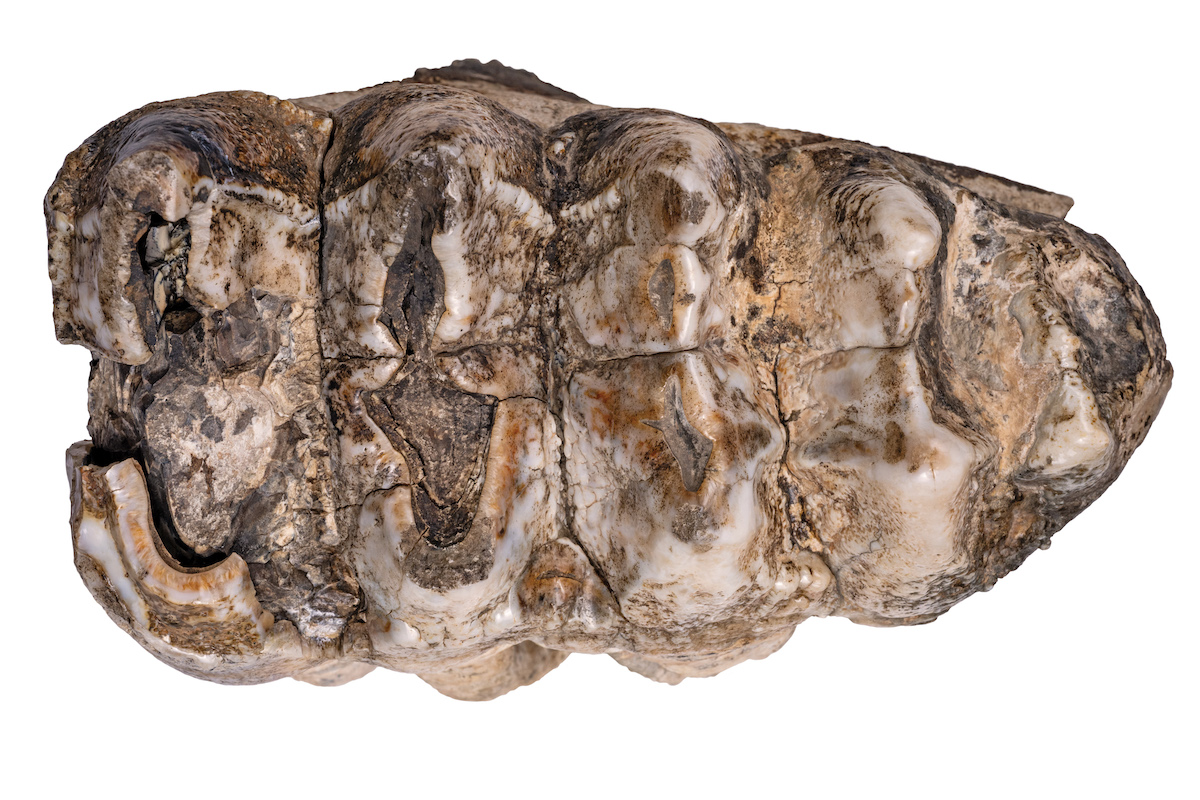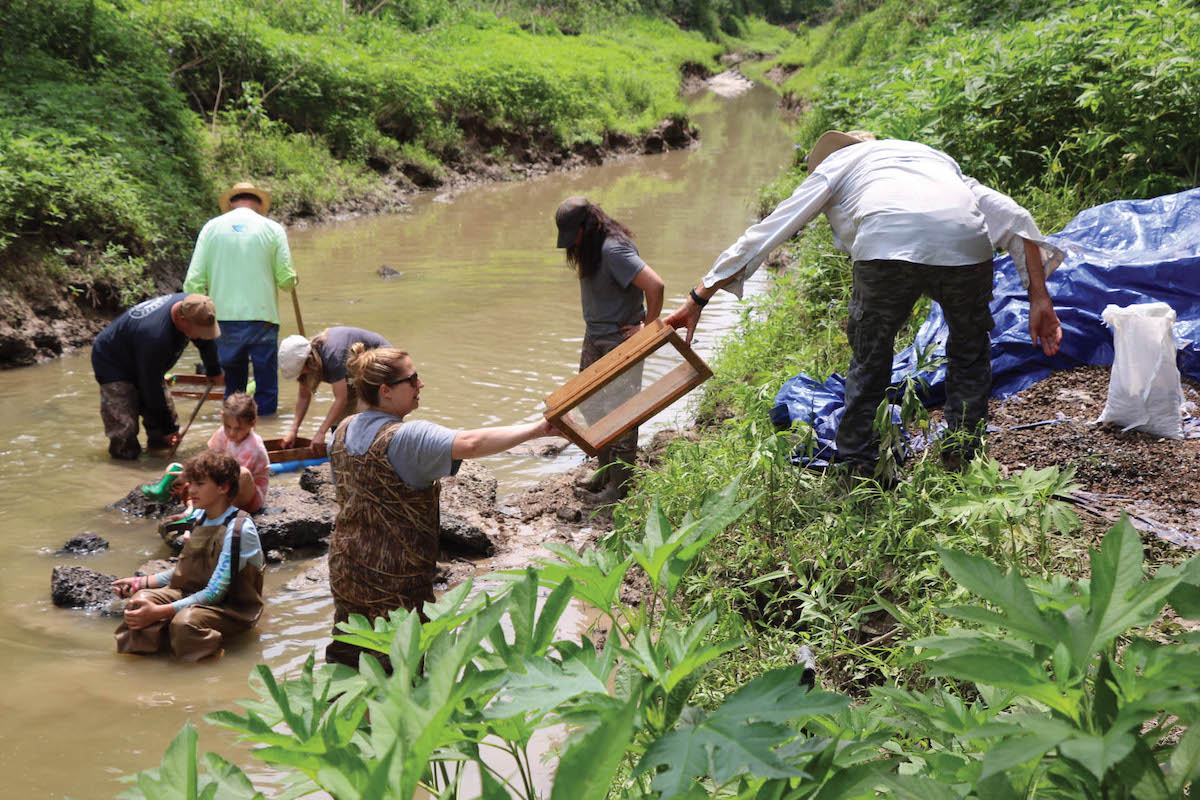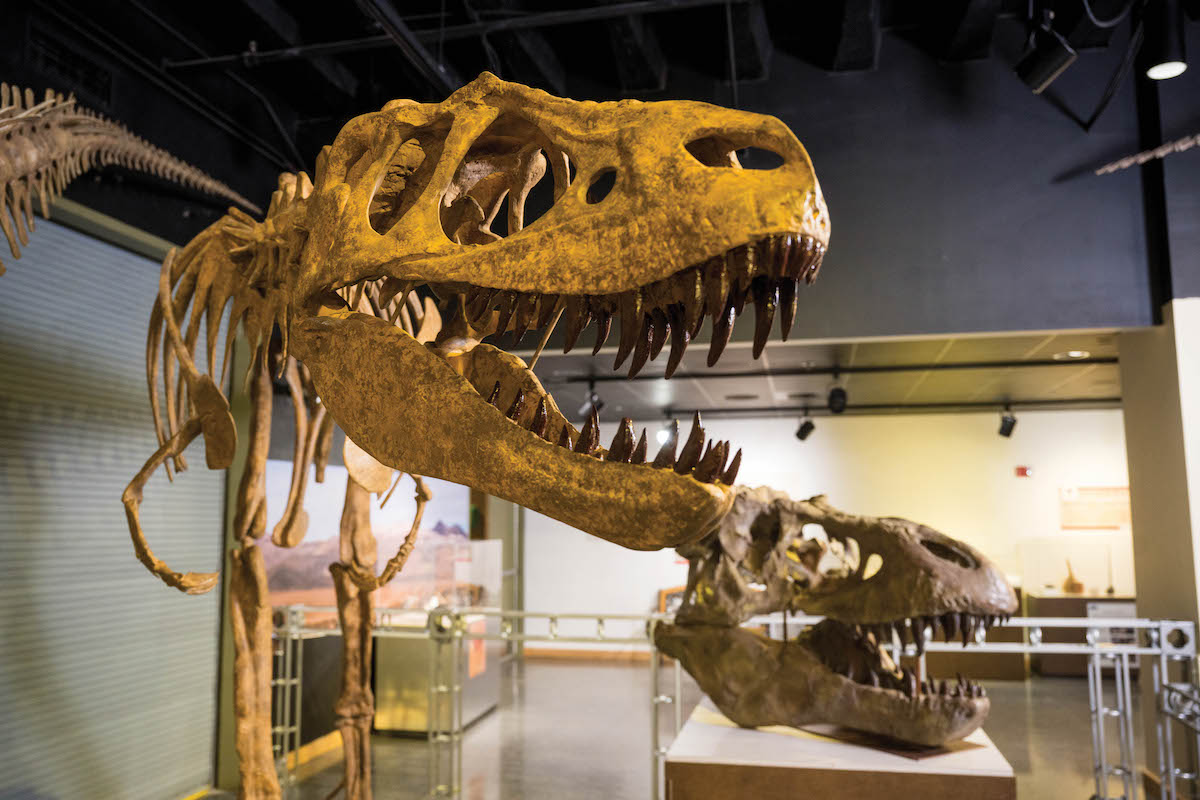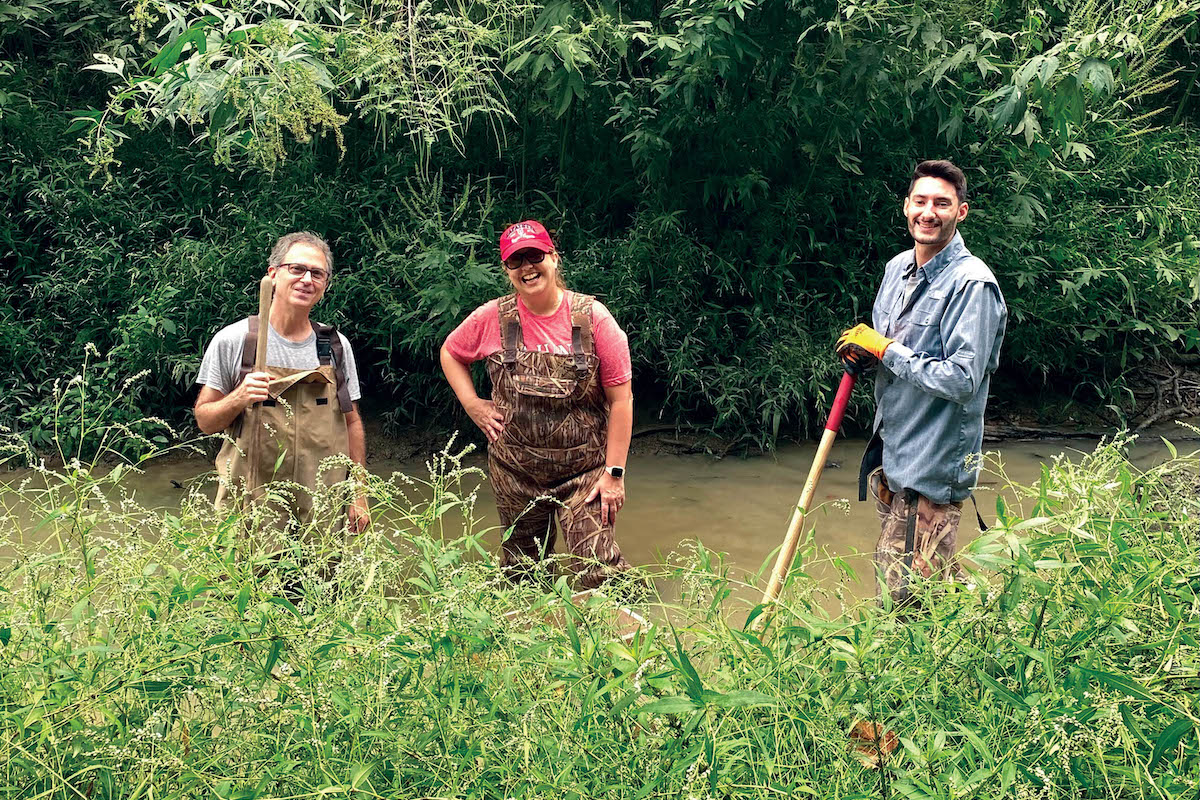We all know someone who pockets interesting rocks and places them in random spots around the house. Honestly, it’s a good habit – taking time to connect with nature, even in your own backyard. For Quentin Carrier, that habit paid off when he found a strange, mud-covered object with tooth-like ridges on his property in Church Point, La.
Being late for work that morning, Carrier shrugged it off and went about his day. Then a week went by, and he couldn’t shake the feeling that what he had found wasn’t just an ordinary rock. In fact, it wasn’t a rock at all. “I kept thinking about it and finally had to go back down there and grab it,” Carrier remembered. “I saw the enamel and still couldn’t believe it. I started to think that’s just crystal or something until I got it back to the house and cleaned it up.”
Fortunately, Carrier is a fossil fan and knew that he had something special. He contacted the state archeologist, who then contacted Dr. Jennifer Hargrave, director of the University of Louisiana at Lafayette Science Museum and an instructor in the School of Geosciences.

After receiving a photo of the specimen, Hargrave’s response was immediate: “I’m coming!” She quickly recognized what Carrier had found: the tooth of a mastodon, a colossal, elephant-like creature that roamed North America during the Pleistocene epoch, which lasted from 2.6 million years to 11,700 years ago. The specimen dates to the latter part of the period, and Hargrave estimated it to be between 10,500 and 12,000 years old. Research is underway to determine a definitive age.
After this remarkable find, Hargrave and her students continued to excavate the site and unearthed additional fossils. One of her graduate students, Hannah Hawkins, identified the specific mastodon species and, using fossil records, confirmed that this massive molar is the largest mastodon tooth ever found in the U.S.
Its extraordinary dimensions don’t stop there. The tooth is about 8.5 inches wide, roughly the size of the diameter of an inflated basketball, and comes in at a whopping 11.5 pounds. However, Hargrave noted that it wouldn’t have weighed that much in the animal’s mouth. “The original organic material has been replaced with different minerals, making it heavier.”

Another graduate student, Chase Sylvester – who, like Hawkins, is pursuing a master’s degree in geology – researched why this species grew to such impressive sizes in South Louisiana. Fully grown mastodons were as tall as 10 feet at their shoulders, and the male American mastodons were larger than Asian and African forest elephants. Based on his research, Sylvester concluded Louisiana’s prehistoric environment may have provided uniquely favorable conditions for mastodons of this scale, but his work is ongoing.
If you want a look at this monstrous molar, you’re in luck. Thanks to donations and specimen loans from repositories across the state, you can now see a collection of Louisiana fossils at the UL Lafayette Science Museum and its exhibit, “Prehistoric Louisiana: A Journey Through Ice Age Acadiana.”
Students enrolled in Hargrave’s museum techniques course took charge of designing this one-of-a-kind collection of fossils from all over Louisiana, including specimens from Acadia and Iberia parishes. As part of the course, students examine how museums operate, practice museum methods and techniques common to paleontology collections, and learn effective scientific communication skills.
The student-created exhibit enables visitors to encounter fossils from other prehistoric creatures like the American lion and the remains of a jaguar, a species that has been extirpated (read: gone extinct locally) from the U.S., but thrives in other parts of the world, including South America.
Paleontology isn’t new to Louisiana, but its presence in Acadiana is, Hargrave said. “The study of invertebrate fossils and microfossils is a key part of the petroleum business. Vertebrate fossils are more rare. It’s just new to our area.”
The museum’s research lab and its growing fossil collections drew Hargrave to Acadiana after she earned her Ph.D. at the University of Oklahoma. “When you discover a fossil, you are the first person in the whole world that has seen it,” she said. “But then you get the opportunity to solve mysteries about it – like what animal it belongs to, how old it is, and what it says about the environment of the place in the geologic past. Even the youngest elementary students can ‘do’ science, and fossils give us a way to present it in an exciting way.”
A version of this story originally appeared in The Current, a nonprofit newsroom located in Lafayette. It is used here with permission. Read more at TheCurrentLa.com.
Photo caption: (top) From left, museum volunteer Michael McBane, Dr. Jennifer Hargrave and graduate student Chase Sylvester aid in uncovering the mastodon tooth found near Church Point, La. Photo credit: Courtesy photo

Sink your teeth into science!
Located downtown at 433 Jefferson St., the UL Lafayette Science Museum offers about 10,000 square feet of immersive exhibit space dedicated to Earth, sea and space exploration. Highlights include themed galleries and a state-of-the-art digital planetarium. Its archives hold tens of thousands of specimens, fossils, artifacts and research collections. A vibrant community hub, the museum hosts special events, field trips and public programs. Learn more and plan your visit.

